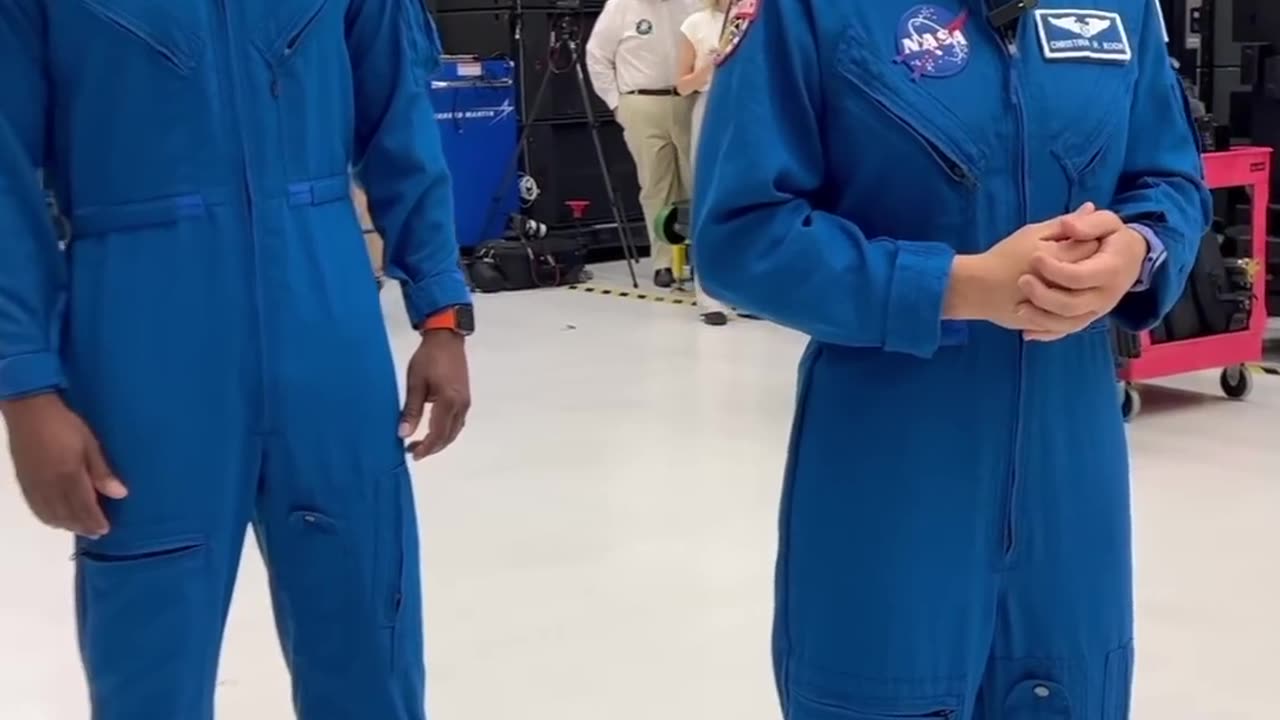Premium Only Content

Artemis II Astronauts’ First Look at Their Lunar Spacecraft
As of my last knowledge update in September 2021, the Artemis II mission had not yet taken place, and the astronauts selected for this mission had not been publicly announced. However, I can provide you with a fictional description of what the astronauts might experience during their first look at their lunar spacecraft based on typical astronaut procedures and equipment used in space missions.
The Artemis II astronauts had spent months in rigorous training, preparing for their historic mission to orbit the Moon. Finally, the day arrived for them to see their lunar spacecraft for the first time. The spacecraft, known as Orion, awaited them in a high-tech assembly facility at NASA's Kennedy Space Center.
As they entered the facility, the astronauts were filled with a mix of excitement and anticipation. Their blue NASA flight suits contrasted sharply against the sterile white surroundings. The air was cool, and the hum of machinery echoed through the spacious room.
In front of them stood the majestic Orion spacecraft, perched atop a specialized transport platform. The spacecraft's sleek design and metallic exterior gleamed under the bright LED lights. Its towering launch abort system, which would help protect them in case of an emergency during launch, was a prominent feature. The spacecraft's hatch, the portal to their home for the upcoming mission, was tightly sealed.
The astronauts approached the spacecraft, their hearts pounding with excitement. A team of engineers and technicians stood nearby, ready to assist and answer any questions. The astronauts took a moment to appreciate the enormity of the endeavor they were about to undertake. They knew that this spacecraft would be their sanctuary, their life support system, and their ticket to the Moon.
As they moved closer to Orion, they examined its exterior, running their gloved hands over the heat-resistant tiles that would protect them during reentry into Earth's atmosphere. They inspected the control panels, buttons, and screens inside the spacecraft, each representing a critical system that would ensure their safety and success on this historic mission.
With the guidance of the technical team, the astronauts climbed inside the spacecraft one by one. Inside, the Orion's compact interior was filled with control panels, monitors, and an array of instruments. Their seats, customized to fit their bodies perfectly, were the astronauts' home for the next several weeks.
Once inside, the astronauts conducted a series of checks and tests, ensuring that everything was functioning perfectly. They familiarized themselves with the controls and systems, rehearsing various scenarios they might encounter during the mission.
The Artemis II astronauts left the spacecraft with a newfound sense of connection to their lunar journey. They knew that the success of this mission depended on their training, teamwork, and the remarkable engineering of the Orion spacecraft. As they stepped out of the assembly facility, they couldn't help but feel that they were on the cusp of something truly historic—an expedition that would take them farther from Earth than any humans had ventured in decades, and one step closer to landing on the Moon once again.
-
 57:18
57:18
Dialogue works
1 day ago $0.13 earnedAndrei Martyanov: NATO is being demilitarized
58.8K7 -
 11:18
11:18
Dr Disrespect
1 day agoDr Disrespect: THE BEST AND WORST OF GAMESCOM 2025
76.8K13 -
 2:08:25
2:08:25
Side Scrollers Podcast
19 hours agoEXCLUSIVE: Marty O’Donnell BREAKS SILENCE On Bungie Drama + Kotaku Hypocrisy + MORE | Side Scrollers
16K2 -
 2:31:49
2:31:49
MattMorseTV
19 hours ago $0.57 earned🔴Trump's Oval Office BOMBSHELL.🔴
28.4K46 -
 25:14
25:14
GritsGG
15 hours agoRank 1 Player Spectates Casual Solos!
13.6K -
 LIVE
LIVE
Lofi Girl
2 years agoSynthwave Radio 🌌 - beats to chill/game to
701 watching -
 4:33:40
4:33:40
FreshandFit
10 hours agoAfter Hours w/ Girls
243K122 -
 2:33:36
2:33:36
Badlands Media
10 hours agoOnlyLands Ep. 21: From Trump’s VP Pick to Green Energy Grift
72.9K8 -
 1:07:26
1:07:26
Inverted World Live
14 hours agoThe War Against Robots w/ Joe Allen
104K5 -
 6:08:31
6:08:31
SpartakusLIVE
13 hours agoWARZONE NUKE IS BACK?! || Solo Challenge CHAMPION to start, duos w/ the Dawg later
107K1